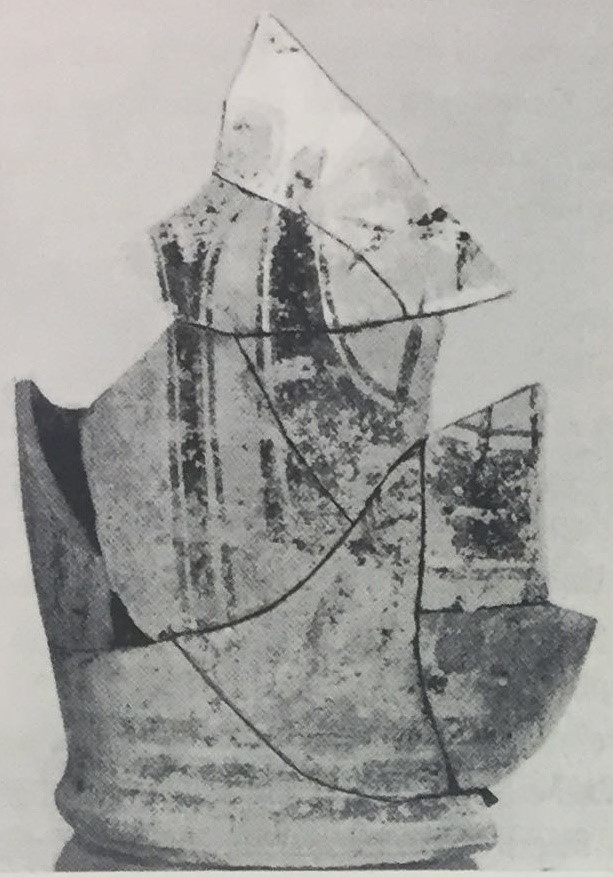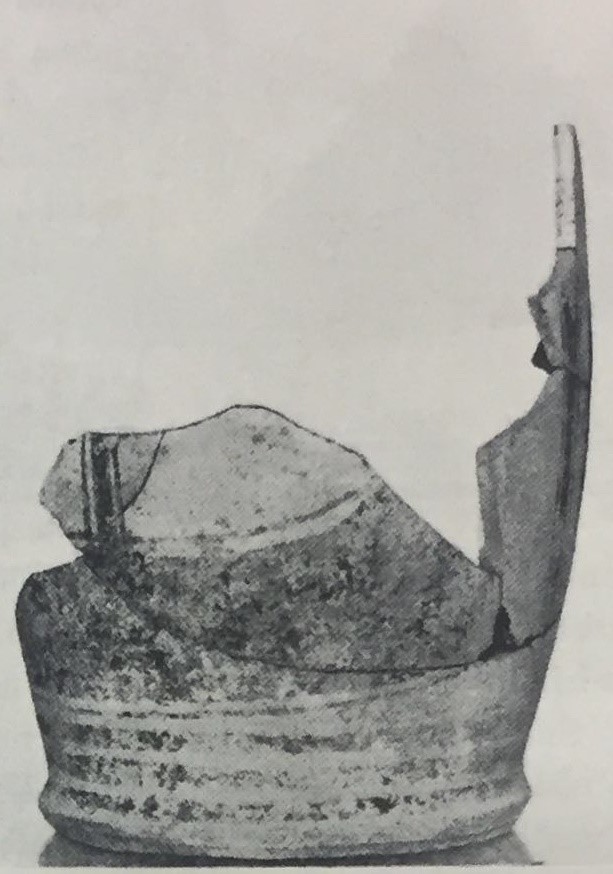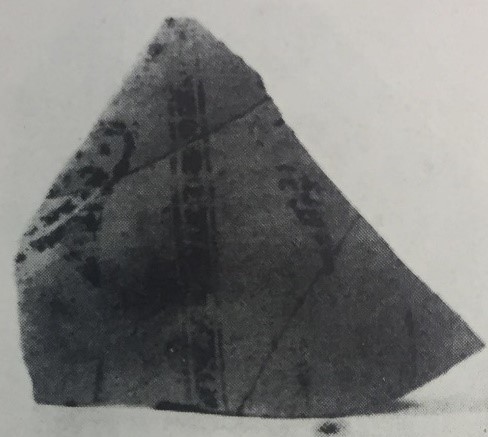Although the two ships have essentially the same
silhouette, there appears to have been an attempt made by the artist to
distinguish the two vessels from one another, with A80a having a
shallower hull as well as being equipped with oars. Wedde argues that
"the Phaistos pitharaki could suggest that Aegean Bronze Age shipwrights
may have constructed vessels of more or less identical silhouettes but
differing draught and beam."(Wedde 2000: 98). The fragmentary condition of the two
vessels however removes the certainty that they had identical
extremities, with the oared one perhaps originally sporting a
figurehead. If so, then the "artist may have painted the two ship types
of the Late Bronze Age period, the Minoan roundship and the Mycenaean
longship"(Ibid: 99). Wedde finally muses whether his type V represents a
transitional step between the round-hulled Minoan ship (type IV) and the
Mycenaean galley type VI, or whether instead the deep-hulled variant was
introduced as a complement to the narrow-hulled type VI due to a
perceived lack of sufficient cargo capacity.







